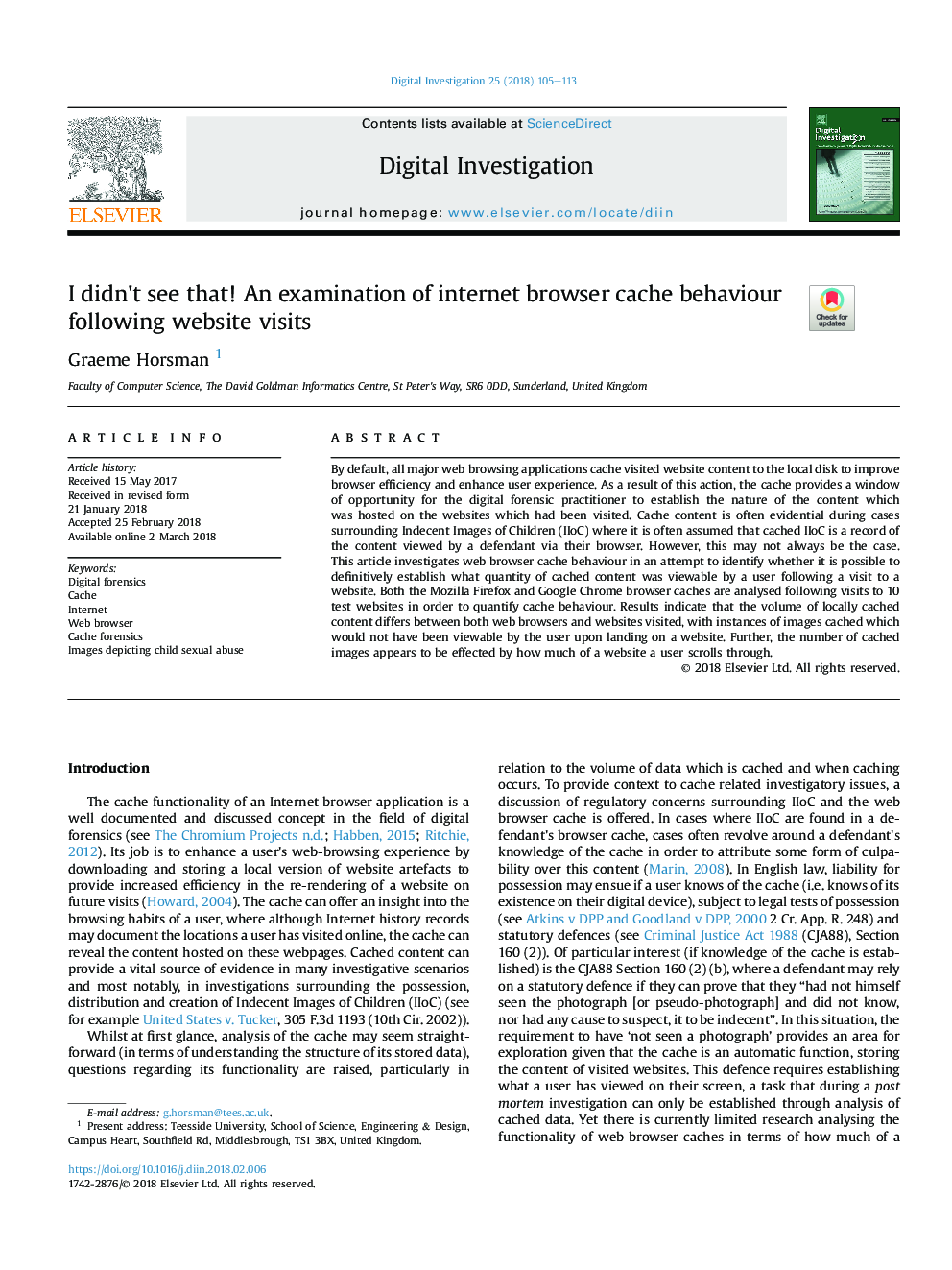| Article ID | Journal | Published Year | Pages | File Type |
|---|---|---|---|---|
| 6884418 | Digital Investigation | 2018 | 9 Pages |
Abstract
By default, all major web browsing applications cache visited website content to the local disk to improve browser efficiency and enhance user experience. As a result of this action, the cache provides a window of opportunity for the digital forensic practitioner to establish the nature of the content which was hosted on the websites which had been visited. Cache content is often evidential during cases surrounding Indecent Images of Children (IIoC) where it is often assumed that cached IIoC is a record of the content viewed by a defendant via their browser. However, this may not always be the case. This article investigates web browser cache behaviour in an attempt to identify whether it is possible to definitively establish what quantity of cached content was viewable by a user following a visit to a website. Both the Mozilla Firefox and Google Chrome browser caches are analysed following visits to 10 test websites in order to quantify cache behaviour. Results indicate that the volume of locally cached content differs between both web browsers and websites visited, with instances of images cached which would not have been viewable by the user upon landing on a website. Further, the number of cached images appears to be effected by how much of a website a user scrolls through.
Related Topics
Physical Sciences and Engineering
Computer Science
Computer Networks and Communications
Authors
Graeme Horsman,
